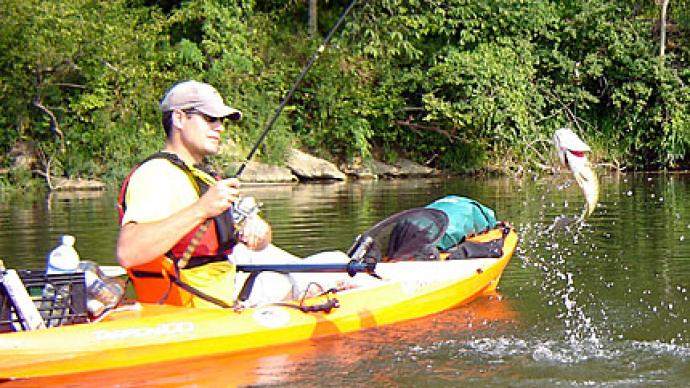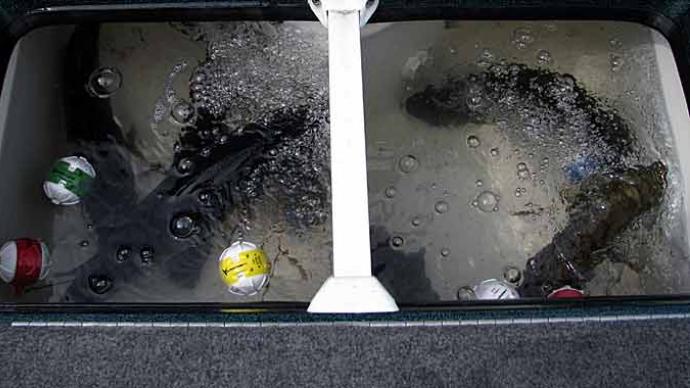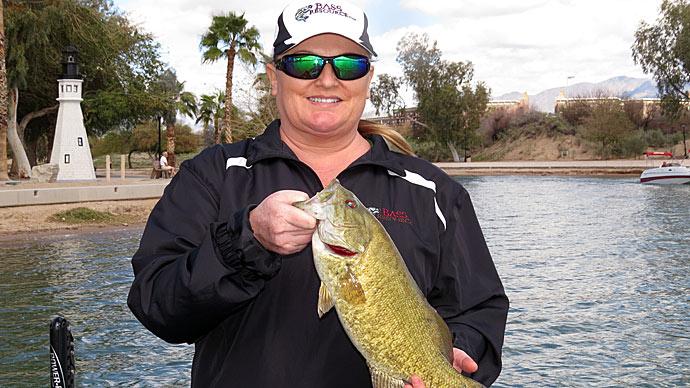
When the path down Sportsmanship Lane led anglers into the noble age of catch-and-release fishing, we took pride in the fact that it was an admirable commitment to put back what we could have taken away from the resource. And life was good until the reality of delayed mortality appeared like a dark cloud.
It's easy to have a positive attitude and slightly confused conception about catch-and-release fishing because we want it to be so. In our minds, we have 100 percent live release. In reality, fish can and do die for several reasons. According to TP&W (Texas Parks & Recreation), this does no harm. They claim catch and release has been good for our fisheries. I believe they're right, but there's no excuse for not taking good care of fish that will be released and expected to live.
This is particularly true when someone is fishing a tournament with plans of winning money related directly to those fish. Yet we still see $25,000 bass rigs pull up to weigh in, and a couple of people get out - who want to win money with a bag of fish with not a drop of any live-release medication in the bag, sometimes without even any water in the bag. 'Catch and Release' made by SureLife Laboratories costs about $15 per bottle. Do you see anything wrong with this picture? You pay more for some lures.
For everyday fishing, you don't need to do that, right? Just catching and releasing fish isn't going to hurt them if you release them immediately. Wrong; every time you touch a fish with your hands, even to remove the hook, you remove areas of slime coating that protects them from fungus and disease.
It is embarrassing that more 'Catch and Release' is sold in Japan than in America. Do the Japanese care more about their fish than we do? They must; they probably have to pay three times more than you would here. It's easy to use. You drop a capful or two in the livewell. Of course, you shouldn't follow the human tendency that if one or two is good, more will be better. Overdosing is almost as bad as not using it at all.
Many sources available for anglers cover the subject of catch and release, fish care, and livewell operation for optimum conditions. Ignorance of the simple things that can be done to ensure better live release and less delayed mortality is no excuse. It isn't hard to help the fish have a better chance of survival.
Interestingly, the FDA doesn't advise its use for food fish, so government employees are restricted in what they can recommend or use in studies. So they don't, or can't, recommend its use. However, after 14 years of caring for fish and rescuing fish after events, this oversight is a mistake. Our tournament rules require the use of the product for a reason. That reason is it helps the fish recover from the effects of being caught and held in a livewell all day.
Most BassResource members are likely more aware of fish care techniques because of the information that we have provided freely for many years. Better education about fish handling and using products intended to offer fish optimum live release can make a difference at any event.
Not all statistics are equal, publicly or privately, but delayed mortality, as a fact, is a very public issue. Other people see dead fish and assume the worst about tournaments. Who could blame them? And now, with studies on delayed mortality indicating higher percentages than most anglers expected or believed, the spotlight is on catch-and-release fishing. More to the point, the question being asked is, does it work? Of course, it does. If it didn't, every lake in this state would be empty of bass.
Some tend to view the released information on delayed mortality studies in a less than favorable light. The consensus is that the percentages are higher than what occurs. While 100 percent live release is the dream of all catch-and-release anglers, the reality is some fish die and always will. But again, the sensible among us also realize that certainly more survive catch and release than do if not released. Hot oil is not conducive to survival.
Public perception, being what it is, though, tends to put the hardest face on tournaments. This, of course, plays directly into the hands of fisheries personnel with private agendas against events. Information can be fed to newspaper reporters who, for lack of a better way to say it, also don't like tournaments. Then, it is published in a manner that tends to skew the general public's opinions.
It's simply not feasible to accurately calculate delayed mortality from immediate release angling. Though fish do die from this as well, it isn't as noticeable and can't be categorized and studied. No doubt more bass suffer or die from being held in a livewell all day and not properly cared for than do those that are immediately released, which is the main reason we made available long ago all information we had learned and accumulated on the care of fish. Education is essential, but the one factor still barring the door to better survival rates is the angler application of that shared information.
No matter how much information we provide, anglers must put it into actual use before it can make a difference. How do we accomplish this? If anyone can ever answer that question, catch and release will undergo a significant change for the better.
It's heating up in the delayed mortality study ring, and anglers who do not wish to be part of the problem must change their attitudes and willingness to try harder to practice proper catch and release. Just remember those fish didn't survive just because you kept water in the livewell, nor because you set them free after you held them all day. If they survived, they did so because you took the time, spent a little money, and paid attention to their well-being.
I have said this before, but perhaps it might not have registered with some people, 'Catch and Release' is a product that I could not, and would not, fish a tournament or hold an event without. I would promote the use of this product if I had to personally pay five times as much for it as the going rate. I might add that this fishing product has more value than the hot, new lure you just bought and paid more for. It gives the fish a better chance.
This product's composition does several things to enhance live release. The most vital first step in any procedure to keep fish alive is neutralizing the adverse effects of catching, handling, and livewell holding. I won't bore you with all the scientific explanations, but suffice it to say, 'Catch and Release' replaces electrolytes, neutralizes chlorine and other harmful impurities from the water, relaxes the fish and helps keep them calm, aids with slime replacement and treatment of fungus and bacterial growth on the fish. It also reduces toxic levels of ammonia and increases oxygen absorption levels in the water the fish are in. It does a lot that plain non-iodized salt can't do, but I also add it to my bag of fish care elements.
While the EPA won't approve a few ingredients in the product for use on fish, they approve of many toxic poisons that can do far more harm to humans. So basically, all they've done is tie the hands of fisheries employees at having one more thing to help fish with. But they haven't tied my hands or yours.
To my mind, one fish proved the worth of its use. She lives at Lake Fork. She's a hump-backed, scarred, blind-in-one-eye old hussy I have seen on three separate occasions. And on those three occasions, I have relieved her air bladder, treated her with 'Catch and Release', and watched as she swam away. Now I can't guarantee she survived the third time. She might have succumbed and been a victim of delayed mortality. But I do know for sure she survived at least twice.
While I am disappointed and skeptical of the current delayed mortality study data released publicly, I know there is some basis for fact. But biologists are obtaining only a portion of the results through their studies and using that data to outline complete and overall numbers and percentages. The problem with this is that numbers from an average are just that; they are averages. And those averages aren't representative of what most event statistic collections would show. And don't even get me started on the fact that the controlled studies did not include the use of 'Catch and Release.'
Nonetheless, if it's used every time you fill your livewell, you can increase the chances for survival of the fish you hold. Their future is in your hands. For the information we provide on fish care, visit this web page as it is posted and easy to print out in your own home. The information begins with the catch, follows through to the release, and includes air bladder relief diagrams and information. This information has been compiled through my 15 years of experience and that of others I have learned from, such as TPW biologists David Campbell and Steve Magnelia.
Clubs, individuals who do or do not fish tournaments, but especially those winning money by the weight of the fish, should attain at least as much skill in fish handling and livewell operation as they have at driving their boat. Otherwise, we might as well forgo the idealistic feelings we have about catch and release and go back to eating everything we catch. Wasting fish is not only against the law; it's not very sportsmanlike either.



